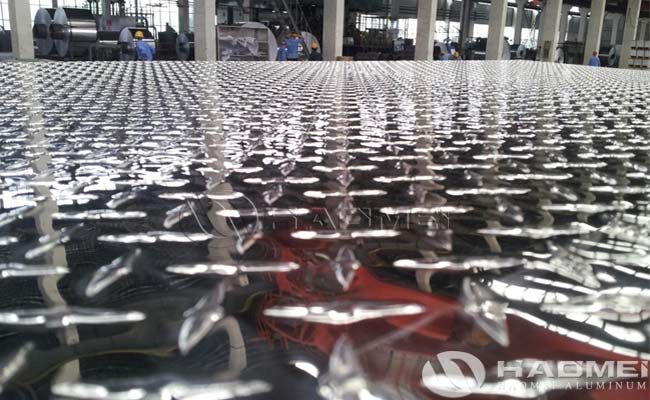How To Polish Aluminum Checker Plate?
Jul-30-2025
The polished finish of aluminum checker plate is primarily achieved through a coordinated process of substrate treatment, surface polishing, embossing and subsequent fine processing. The core goal is to reduce surface roughness and enhance glossiness, resulting in excellent reflectivity.

The specific production process of polished aluminium checker plate is as follows:
1. Substrate Preparation: Laying the Foundation for a Bright Surface
A bright finish requires a uniform, smooth surface on the aluminum sheet itself.
- Smelting and Casting:
Aluminum ingots (typically high purity and low impurities, which facilitate a bright finish) are first melted and then rolled through a casting mill into thick aluminum coils (hot-rolled billets). At this stage, the surface is relatively rough and serves only as a base billet.
- Cold Rolling Finishing:
The hot-rolled billet undergoes multiple cold rolling passes (high rolling force and high precision). High-quality rollers (mirror polished) are then applied to the aluminum sheet surface. The rollers' smooth surface is "transferred" to the aluminum sheet, significantly reducing the surface roughness (typically Ra ≤ 0.8μm), creating a preliminary, bright base surface.
2. Surface Polishing: Improving the Finish to a "Glossy" Finish
Although the surface after cold rolling is smooth, it may contain defects such as micro-scratches and oxide layers, requiring further polishing:
- Mechanical Polishing:
Using tools such as linen wheels and wool wheels, along with a polishing paste (such as aluminum oxide or chromium oxide abrasives), the surface is polished at high speed to remove micro-concavities, resulting in a smoother surface and enhanced reflectivity (similar to "mirror polishing").
- Chemical Polishing:
Immersing the aluminum sheet in a specific chemical solution (such as a mixture of phosphoric acid and sulfuric acid) selectively erodes microscopic surface protrusions, smoothing the surface and removing the oxide film, resulting in a uniform, glossy finish (suitable for large-area treatment and highly efficient).
- Electrolytic Polishing:
In an electrolytic bath, the aluminum sheet acts as the anode. Direct current preferentially dissolves microscopic surface protrusions, achieving "electrochemical leveling," ultimately resulting in a highly glossy surface finish (more uniform and longer-lasting than chemical polishing).
3. Embossing: Preserving the glossy surface while creating a pattern
After the glossy substrate is treated, an embossing process creates a pattern on the aluminum plate surface while ensuring the glossy finish is maintained.
A smooth pattern roller (with a pre-engraved pattern and polished grooves and projections) is used to press the aluminum sheet against the roller under a controlled temperature and pressure.
The aluminum sheet's surface "replicates" the roller's pattern during plastic deformation. Due to the roller's smooth surface, the pattern's projections and grooves retain their original glossy finish, ultimately creating a "gloss + pattern" composite effect.
4. Post-Processing: Protecting the glossy surface and enhancing durability
- Cleaning and Degreasing: Removes impurities and oil residue from the polishing or embossing process to prevent contamination of the glossy surface.
- Anodizing (Optional): To enhance corrosion resistance, anodizing can be performed. This treatment forms a transparent oxide film (Al₂O₃) on the aluminum sheet surface. The film itself is colorless and does not affect the reflective properties of the glossy surface, while also protecting the surface from scratches.
- Pore Sealing: After anodizing, hot water or steam is used to seal the pores in the film, filling the pores and smoothing the surface, further enhancing the glossy finish.
- Coating (Optional): In some applications, a transparent varnish is applied to form a protective film to prevent oxidation and contamination, extending the life of the glossy finish.
In summary, the polished finish of aluminum checker plate is the result of a comprehensive process: cold rolling to enhance the base material, polishing and finishing to enhance the gloss, smooth roller embossing to maintain the gloss, and subsequent treatments to maintain the gloss. The key is to achieve a product that combines patterned texture with a glossy finish by controlling surface roughness and maintaining surface cleanliness during processing.